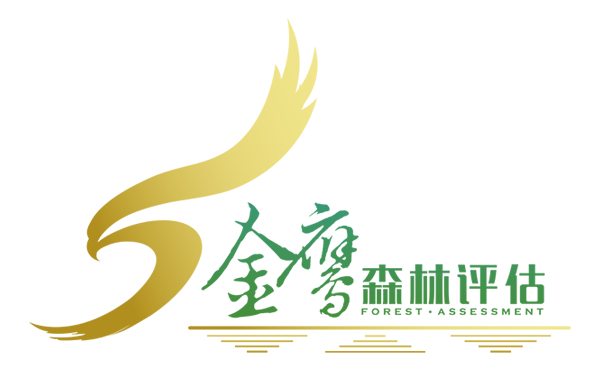发布:2025-11-23 浏览:0
用材林森林资源转让价值评估探讨
Exploration into the Valuation of Timber Forest Resource Transfer
森林资源资产价值主要是为林权交易等资产业务提供价值尺度,随着社会主义市场经济体制的完善和集体林权制度改革的深入,森林资源资产评估在林业经济活动中扮演着越来越重要的角色。本文从用材林资源转让的视角出发,探讨林木资产的特点、评估方法及其实际应用并结合案例分析。一、林木资产及经营的特点林木资产是资源性资产,它具有资源性资产的特点,它既依托林地提供其生产的土壤,在形成过程中又凝结着人类的劳动,它的经营别具特点,这些特点将影响林木资产的评估。
The value of forest resource assets mainly provides a value scale for asset businesses such as forest rights trading. With the improvement of the socialist market economy system and the deepening of collective forest rights system reform, forest resource asset evaluation plays an increasingly important role in forestry economic activities. This article explores the characteristics, evaluation methods, and practical applications of forest assets from the perspective of timber resource transfer, and combines case analysis. 1、 The characteristics of forest assets and management: Forest assets are resource-based assets, which have the characteristics of resource-based assets. They not only rely on forest land to provide soil for production, but also embody human labor in the formation process. Their management has unique characteristics, which will affect the evaluation of forest assets.
1. 林木资产经营周期长林木生长和森林经营的长期性森林资源资产是再生性资产,森林中林木的生长有一定的规律,从幼林到成熟林,森林都处于生长阶段,各种林木成林成材周期也各有不同,每个阶段的产量都不同,随着林分年龄的增大,产量也相应增加:经营森林所支出的成本也伴随着林分生长全过程;林木资产的经济价值是隐含的,只有在林木采伐时才能取得收益。
1. Forest asset management cycle is long. Forest growth and forest management are long-term. Forest resource assets are regenerative assets, and the growth of trees in forests follows a certain pattern. From young forests to mature forests, forests are in the growth stage, and the maturity cycle of various trees is also different. The yield of each stage is different, and as the age of the forest stands increases, the yield also increases accordingly. The cost of managing forests also accompanies the entire process of forest growth; The economic value of forest assets is implicit, and profits can only be obtained during the logging process.
2. 储蓄性资产和产品实物内涵的一致性林木资产的实物是活立木的材积(蓄积量),其每年的产品是活立木生长的木材(生长量),而最终的产品是经采伐利用获得的木材材积。其资产与产品的物质内涵是一样的,这一特点就是林业的储蓄性。
2. Consistency between savings assets and the physical content of products. The physical content of forest assets is the volume of standing timber (stock volume), and its annual product is the growth of standing timber (growth volume). The final product is the volume of timber obtained through logging and utilization. The material connotation of its assets and products is the same, which is the saving nature of forestry.
3. 营林成本阶段性差异营林成本的阶段性营林成本贯穿于林木生长全过程,但支出的成本阶段性强,主要集中在初期,即幼林郁闭前,在幼林进入郁闭后至林木主伐期间成本下降,每年仅要支付管护费(包括病虫害防治费、森林火灾预防费和护林费)和地租。
3. Stage differences in forest management costs Stage differences in forest management costs Forest management costs run through the entire process of forest growth, but the cost of expenditure is highly phased, mainly concentrated in the early stages, that is, before the young forest canopy closes. After the young forest enters the canopy closure period, the cost decreases during the main logging period, and only management fees (including pest control fees, forest fire prevention fees, and forest protection fees) and rent need to be paid annually.
4. 地域差异大地域的差异性林木资产是依附在林地上的,由于林地立地质量不同,同一年龄、同一树种、同一培育措施的林分其生长状况不一样,价格也相差很大,即使生长状态一致由于地利等级不一样,其价格也有较大的差异。
4. There are significant regional differences. Forest assets are attached to forest land, and due to differences in site quality, forest stands of the same age, species, and cultivation measures have different growth conditions and prices. Even if the growth status is the same, due to differences in geographical grade, their prices also vary greatly.
二、林木资产评估的测算公式及理论依据
2、 Calculation formula and theoretical basis for forest asset evaluation
参考《森林资源资产评估技术规范》(LY/T2407-2015)规定,用材林林木资产评估可以选用的评估方法主要有市场法、收益法、重置成本法;市场法包括木材市场价倒算法、市场成交价比较法;收益法包括收获现值法、年金资本化法、周期收益资本化法;成本法包括重置成本法、林地费用法等,以下就实务中较为适用几种方法进行介绍。
According to the Technical Specification for Forest Resource Asset Evaluation (LY/T2407-2015), the evaluation methods that can be used for timber forest asset evaluation mainly include market method, income method, and reset cost method; The market approach includes the timber market price inversion algorithm and the market transaction price comparison method; The income approach includes the present value of earnings approach, annuity capitalization approach, and cyclical income capitalization approach; The cost method includes reset cost method, forest land expense method, etc. The following introduces several methods that are more applicable in practice.
1.木材市场价倒算法(1)基本原理:木材市场价倒算法又称剩余价值法,是将被评估林木资产皆伐后所得木材的市场销售总收入,扣除木材生产经营所消耗的成本和合理利润,剩余价值部分作为林木资产评估值的一种方法。(2)计算公式E=W-C-FE:林木资产评估值;W:销售总收入;C:木材生产经营成本(包括但不限于人工成本、采购成本、销售费用、财务费用)F:木材生产经营利润(木材采伐者的合理利润)。当森林培育与木材生产经营采伐为同一方时,应考虑评估目的等因素,确定是否扣减木材生产经营利润(F)
1. Timber market price inversion algorithm (1) Basic principle: Timber market price inversion algorithm, also known as residual value method, is a method of evaluating the value of timber assets by deducting the cost and reasonable profit of timber production and operation from the total market sales revenue of timber obtained after the evaluation of timber assets. (2) Calculation formula E=W-C-FE: Forest asset evaluation value; W: Total sales revenue; C: Wood production and operation costs (including but not limited to labor costs, procurement costs, sales expenses, financial expenses) F: Wood production and operation profits (reasonable profits of wood loggers). When forest cultivation and timber production and management logging are the same party, factors such as evaluation purposes should be considered to determine whether to deduct the profits from timber production and management (F)
2.市场成交价比较法(1)基本原理:市场成交价比较法是将相同或类似的森林资源资产的现行市场成交价格作为比较基础,通过价格变动、林分质量的调整,估算拟评估森林资源资产价值的一种方法。同一评估对象一般选取三个及三个以上交易案例作为参照,对各交易案例成交价格调整后,采用简单算术平均法、加权算术平均法、中位数法、众数法、综合分析法等的其中一种方法计算确定评估结果。(2)计算公式(简单算术平均法)。式中:E:林木资产评估值评估值;×:拟评估森林资产的实物量;Ki:第i个交易案例林分质量综合调整系数;Kbi:第i个交易案例物价调整系数;G:厂第i个交易案例市场交易价格;N:交易案例个数。
2. Market transaction price comparison method (1) Basic principle: Market transaction price comparison method is a method of estimating the value of forest resource assets to be evaluated by using the current market transaction prices of the same or similar forest resource assets as the comparison basis, and adjusting the price changes and forest stand quality. Generally, three or more transaction cases are selected as references for the same evaluation object. After adjusting the transaction prices of each transaction case, one of the methods such as simple arithmetic mean, weighted arithmetic mean, median, mode, and comprehensive analysis is used to calculate and determine the evaluation results. (2) Calculation formula (simple arithmetic mean method). In the formula: E: Evaluation value of forest assets; X: The physical quantity of forest assets to be evaluated; Ki: Comprehensive adjustment coefficient for forest stand quality in the i-th transaction case; Kbi: Price adjustment coefficient for the i-th transaction case; G: The market transaction price of the i-th transaction case of the factory; N: Number of transaction cases.
3.收获现值法(1)基本原理:收获现值法是通过预测林分生长到主伐时可生产的木材的数量,利用木材市场价倒算法测算出其立木的价值并将其折成现值,然后扣除评估基准日后到主伐前预计要进行各项经营措施成本(含地租)的折现值,将其剩余部分作为被评估林木资产的评估值。(2)计算公式
3. Harvesting Present Value Method (1) Basic Principle: The harvesting present value method predicts the amount of wood that can be produced when the forest stands grow to the main cutting stage, calculates the value of the standing wood using the wood market price inversion algorithm, and converts it into present value. Then, after deducting the discounted value of the expected operating costs (including land rent) from the evaluation benchmark date to the main cutting stage, the remaining part is used as the evaluation value of the evaluated forest asset. (2) Calculation formula
4.周期收益资本化法(1)基本原理:周期收益资本化法是将被评估林木资产稳定的周期收益,按适当的投资收益率折算出资产的价值。(2)计算公式:式中:E:林木资产评估值;K:林分质量调整系数,一般根据待评估的林分与标准林分的蓄积或胸径指标进行调整;Au:参照林分u年主伐时的净收益,木材销售收入扣除采运成本、销售费用、管理费用、财务费用、有关税费、木材经营的合理利润后的部分;Aa、Ab参照林分第a,b年的间伐和其他纯收益(n>a,b时,Aa、Ab=0);Ci:评估基准日后至主伐期间的年营林成本;u一经营周期;n一林分年龄;P:投资收益率,一般采用平均收益率进行测算
4. Fundamental principle of cyclic income capitalization method (1): The cyclic income capitalization method converts the stable cyclic income of the evaluated forest assets into the value of the assets at an appropriate investment return rate. (2) Calculation formula: In the formula: E: Forest asset evaluation value; K: The forest quality adjustment coefficient is generally adjusted based on the volume or diameter at breast height indicators of the evaluated forest and the standard forest; Au: Referring to the net income of the forest stand during the main cutting in year u, the portion of timber sales revenue after deducting transportation costs, sales expenses, management expenses, financial expenses, relevant taxes, and reasonable profits from timber management; Aa and Ab refer to the thinning and other net income of the forest in years a and b (when n>a and b, Aa、Ab=0); Ci: Annual forest management cost from the evaluation benchmark date to the main logging period; U business cycle; N is the age of the forest stand; P: The investment return rate is generally calculated using the average return rate
5. 重置成本法(1)基本原理:重置成本法是按现时的工价及生产水平,重新营造一块与被评估林木资产相类似的资产所需的成本费用,作为被评估林木资产价值的方法。(2)计算公式:式中:E:林木资产评估值;K:林分质量综合调整系数Ci:第i年以现时工价及生产水平为标准计算的生产成本,主要包括各年投入的劳动力工资、物质消耗、地租、管理费用等:n:林分年龄;P:投资收益率三、案例分析案例一:某公司拟转让近期收购的80公顷杉木林,该林分经营类型为一般用材林,林龄为25年,处于成熟林组,林分平均胸径为18厘米,平均树高为16米,平均蓄积为160立方米/公顷,需评估该小班林木资产的市场价值。据调查相关技术经济指标为:①木材价格。木材价格以委托评估资产附近林产品交易市场木材销售价为基础,结合待评估林木资产的实际平均胸径综合确定木材的平均售价。经调查分析,杉原木售价800元/立方米,杉综合材售价650元/立方米。②木材经营成本。木材经营成本主要包含伐区设计费、检尺费、采运费、销售费用、管理费用等,以出材量为计算基数,合计为170元/立方米。③木材销售税费。木材销售税费主要包含增值税、城建税、维简费、不可预见费等合计按销售收入的18.0%征收。④木材经营利润率。按主伐成本的16.0%计算。⑤出材率。按委估资产地方标准《××市县林区商品林主要树种出材率表》,胸径为18厘米的杉木出材率为70%(其中原木25%、综合材45%)。根据上述指标,评估过程及结论如下:木材销售收入W=80×160×25%×800+80×160×45%×650=6,304,000(元)木材生产经营成本C=(80×160×25%+80×160×45%)×170+6,304,000.00×18%=1,523,200.00+1,134,720.00=2,657,920(元)木材生产经营利润F=2,657,920×16%=425,267.20(元)林木评估值E=W-C-F=6,304,000-2,657,920-425,267.20=3,220,812.80(元)
5. Basic principle of reset cost method (1): The reset cost method is a method of assessing the value of the evaluated forest asset by using the cost of rebuilding an asset similar to the evaluated forest asset based on the current labor price and production level. (2) Calculation formula: In the formula, E represents the assessed value of forest assets; K: Comprehensive adjustment coefficient Ci for forest stand quality: Production cost calculated based on current labor prices and production levels in the i-th year, mainly including labor wages, material consumption, land rent, management expenses, etc. invested in each year: n: Forest stand age; P: Return on Investment 3, Case Analysis Case 1: A company intends to transfer 80 hectares of recently acquired Chinese fir forest, which is a general timber forest with a forest age of 25 years and is in the mature forest group. The average diameter at breast height of the forest is 18 centimeters, the average tree height is 16 meters, and the average volume is 160 cubic meters per hectare. The market value of the forest assets in this small group needs to be evaluated. According to the survey, the relevant technical and economic indicators are: ① Wood prices. The price of timber is based on the sales price of timber in the forest product trading market near the entrusted evaluation asset, and the average selling price of timber is determined by combining the actual average breast height diameter of the evaluated forest asset. After investigation and analysis, the selling price of fir logs is 800 yuan/cubic meter, and the selling price of fir composite timber is 650 yuan/cubic meter. ② Wood operating costs. The operating cost of timber mainly includes cutting area design fee, measuring fee, mining fee, sales fee, management fee, etc., calculated based on the output of timber, totaling 170 yuan/cubic meter. ③ Wood sales tax and fee. The sales tax for timber mainly includes value-added tax, urban construction tax, maintenance fees, unforeseeable expenses, etc., which are levied at a total rate of 18.0% of the sales revenue. ④ Profit margin of timber management. Calculated at 16.0% of the main cutting cost. ⑤ Material output rate. According to the local standard for asset valuation, the yield rate of main tree species in commercial forests in the forest area of XX city and county is 70% for Chinese fir with a breast height diameter of 18 centimeters (including 25% for logs and 45% for composite timber). Based on the above indicators, the evaluation process and conclusion are as follows: Wood sales revenue W=80 × 160 × 25% × 800+80 × 160 × 45% × 650=6304000 (yuan) Wood production and operation cost C=(80 × 160 × 25%+80 × 160 × 45%) × 170+6304000.00 × 18%=152320.00+1134720.00=2657920 (yuan) Wood production and operation profit F=2657920 × 16%=425267.20 (yuan) Wood evaluation value E=W-C-F=6304000-2657920-425267.20=3220812.80 (yuan)
案例二:现有某国有林场拟转让一块面积为100亩的杉木中龄林,年龄为14年,亩蓄积为10立方米,经营目标为中径材(其主伐年龄为26年),标准参照林分主伐时平均亩蓄积为18立方米,林龄为14年的标准参照林分的平均亩蓄积为9立方米,假设该林分不需要间伐,有关技术经济指标如下:①营林成本:管护费用为5元/亩·年,地租为48元/亩·年;②杉木林主伐时林木单位蓄积净收益为400元/立方米;③投资收益率为8%计算该林分的林木资产评估值。由于该林木经营不存在间伐,且评估基准日至主伐时各年营林成本相同,故收获现值法公式可简化为:林分质量综合调整系K=委估林分每亩蓄积量÷同林龄标准宗地的每亩蓄积量=10÷9=1.11主伐时每亩蓄积量=标准参照林分主伐时平均亩蓄积×林分质量综合调整系K=18×1.11=20(立方/亩)林木评估值=294158.34-39941.215=254217.125(元)
Case 2: A state-owned forest farm plans to transfer a 100 acre middle-aged Chinese fir forest with an age of 14 years and a stock volume of 10 cubic meters per acre. The management goal is to produce medium diameter timber (with a main cutting age of 26 years). The standard is based on the average stock volume of 18 cubic meters per acre during the main cutting of the forest stand, and the standard for the forest age of 14 years is based on the average stock volume of 9 cubic meters per acre of the forest stand. Assuming that the forest stand does not require thinning, the relevant technical and economic indicators are as follows: ① Forest management cost: management and maintenance fee is 5 yuan/acre · year, and land rent is 48 yuan/acre · year; ② The net income per unit of timber during the main logging of Chinese fir forest is 400 yuan/cubic meter; ③ Calculate the forest asset evaluation value of the forest stand with an investment return rate of 8%. Due to the absence of thinning in the management of this forest, and the same annual forest management costs from the evaluation reference date to the main cutting, the formula for the present value of harvest method can be simplified as follows: the comprehensive adjustment system for forest quality K=the volume per mu of the evaluated forest ÷ the volume per mu of the same forest age standard plot=10 ÷ 9=1.11. The volume per mu during the main cutting=the average volume per mu during the main cutting of the standard reference forest × the comprehensive adjustment system for forest quality K=18 × 1.11=20 (cubic meters per mu). The forest evaluation value is 294158.34-39941.215=254217.125 (yuan)
四、需要进行林权资产评的相关经济行为
4、 Related economic activities that require forest tenure asset evaluation
1、林权流转集体林权制度改革,使林地经营权、林木所有权落实到千家万户,随着市场经济的发展,林地土地经营权、林木所有权流转等经济行为越来越频繁,林权流转双方为维护各自的切身利益,就需要聘请评估机构对需流转的土地经营权、林木所有权进行评估;一份专业公允的评估报告即维护了交易双方的切身利益,又是税务机构依法计税的主要依据。
1. The reform of the collective forest rights system for the transfer of forest rights has enabled the implementation of forest land management rights and forest ownership to millions of households. With the development of the market economy, economic activities such as the transfer of forest land management rights and forest ownership have become increasingly frequent. In order to safeguard their respective interests, both parties involved in forest rights transfer need to hire evaluation agencies to assess the land management rights and forest ownership that need to be transferred; A professional and fair evaluation report not only safeguards the vital interests of both parties in the transaction, but also serves as the main basis for tax authorities to calculate taxes in accordance with the law.
2、林权抵押贷款随着林权制度改革和林业经济的发展,有的林权所有者为发展林业经济,扩大林业产业经营,对资金的需求也越来越多,中国银监会、国家林业局、国土资源部为重点支持林业经营主体的涉林资金需求,推广林权按揭抵押贷款、林权直接抵押贷款、林权反担保抵押贷款、林权流转交易贷款、林权流转合同鉴证贷款、“林权抵押+林权收储+森林保险”贷款等林权抵押贷款模式,银行在放贷过程中为了确定抵押贷款额度和预防金融风险,就需要请资产评估机构对森林资源资产进行评估。
2. With the reform of the forest tenure system and the development of the forestry economy, some forest tenure owners have an increasing demand for funds to develop the forestry economy and expand forestry industry operations. The China Banking Regulatory Commission, the State Forestry Administration, and the Ministry of Land and Resources focus on supporting the forest related funding needs of forestry management entities, promoting forest tenure mortgage loans, forest tenure direct mortgage loans, forest tenure counter guarantee mortgage loans, forest tenure transfer transaction loans, forest tenure transfer contract authentication loans, "forest tenure mortgage+forest tenure collection and storage+forest insurance" loans and other forest tenure mortgage loan models. In the lending process, banks need to invite asset appraisal institutions to evaluate forest resource assets in order to determine the amount of mortgage loans and prevent financial risks.
3. 开办林业保险业务林业生产的周期长,为林业生产者减少由于自然灾害、森林火灾所造成的损失,化解森林经营风险,政策性和商业性林业保险业务需求也越来越多。而开展林业保险,也需由森林资源评估机构对森林资源价值进行评估,以确定保费额度。如果遭受自然灾害和森林火灾,还要进行现场评估,以确定保险理赔的额度。
3. Establishing forestry insurance business has a long production cycle, reducing losses caused by natural disasters and forest fires for forestry producers, resolving forest management risks, and increasing demand for policy and commercial forestry insurance business. To carry out forestry insurance, forest resource assessment agencies also need to evaluate the value of forest resources to determine the premium amount. If suffering from natural disasters and forest fires, on-site assessments must also be conducted to determine the amount of insurance claims.
结语
Conclusion
森林资源资产评估是林业经济活动中的重要环节。一份客观公允的资产评估报告,可以为林权交易、金融支持和风险管理提供有力支撑,促进林业资源的可持续利用和市场化发展。
Forest resource asset assessment is an important part of forestry economic activities. An objective and fair asset valuation report can provide strong support for forest rights trading, financial support, and risk management, promoting the sustainable utilization and market-oriented development of forestry resources.
本文由 林木资产价格评估 友情奉献.更多有关的知识请点击 http://www.jyslpg.com/ 真诚的态度.为您提供为全面的服务.更多有关的知识我们将会陆续向大家奉献.敬请期待.
This article is dedicated to the evaluation of forest asset prices For more related knowledge, please click http://www.jyslpg.com/ Sincere attitude To provide you with comprehensive services We will gradually contribute more relevant knowledge to everyone Coming soon.




















